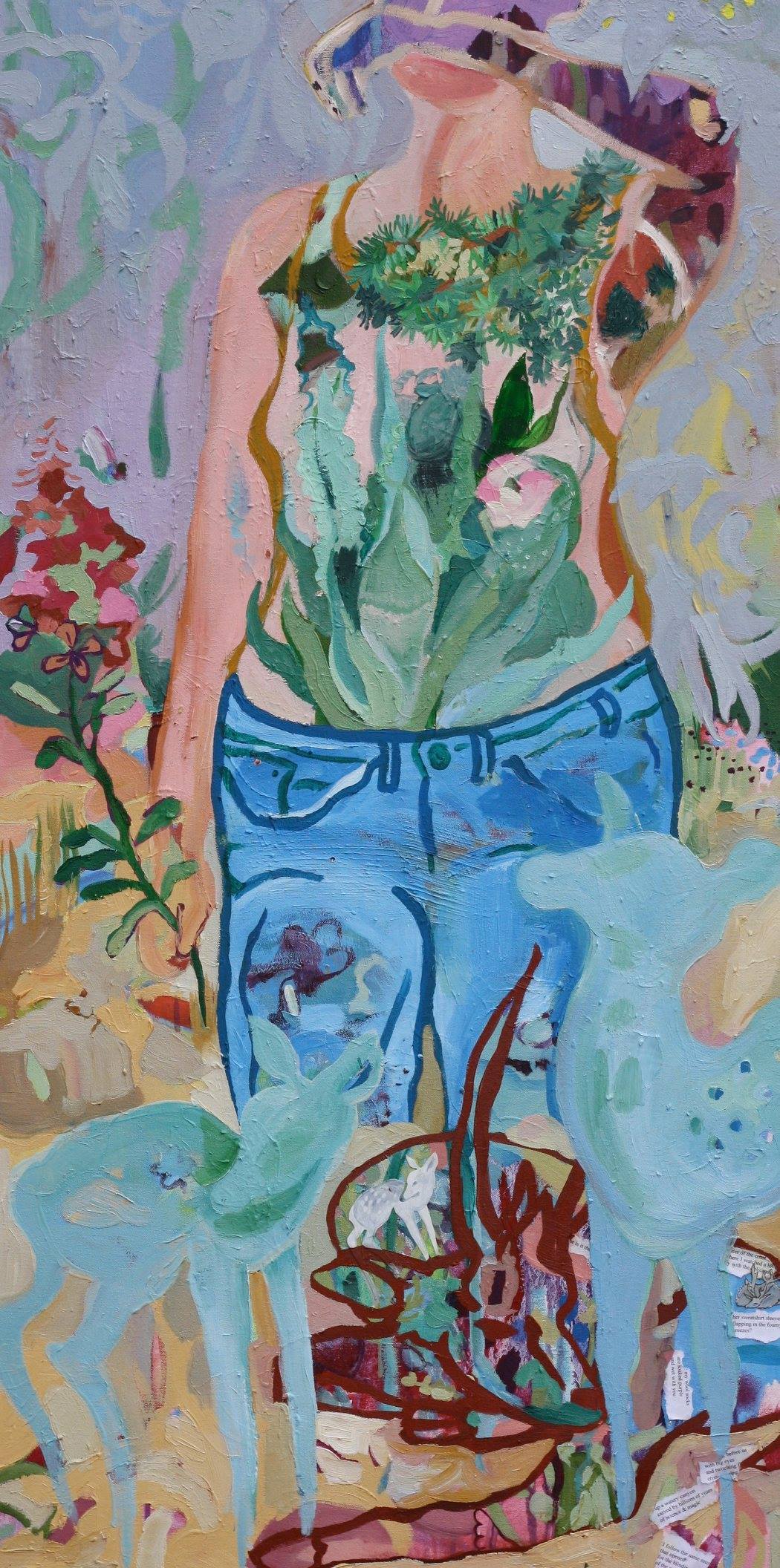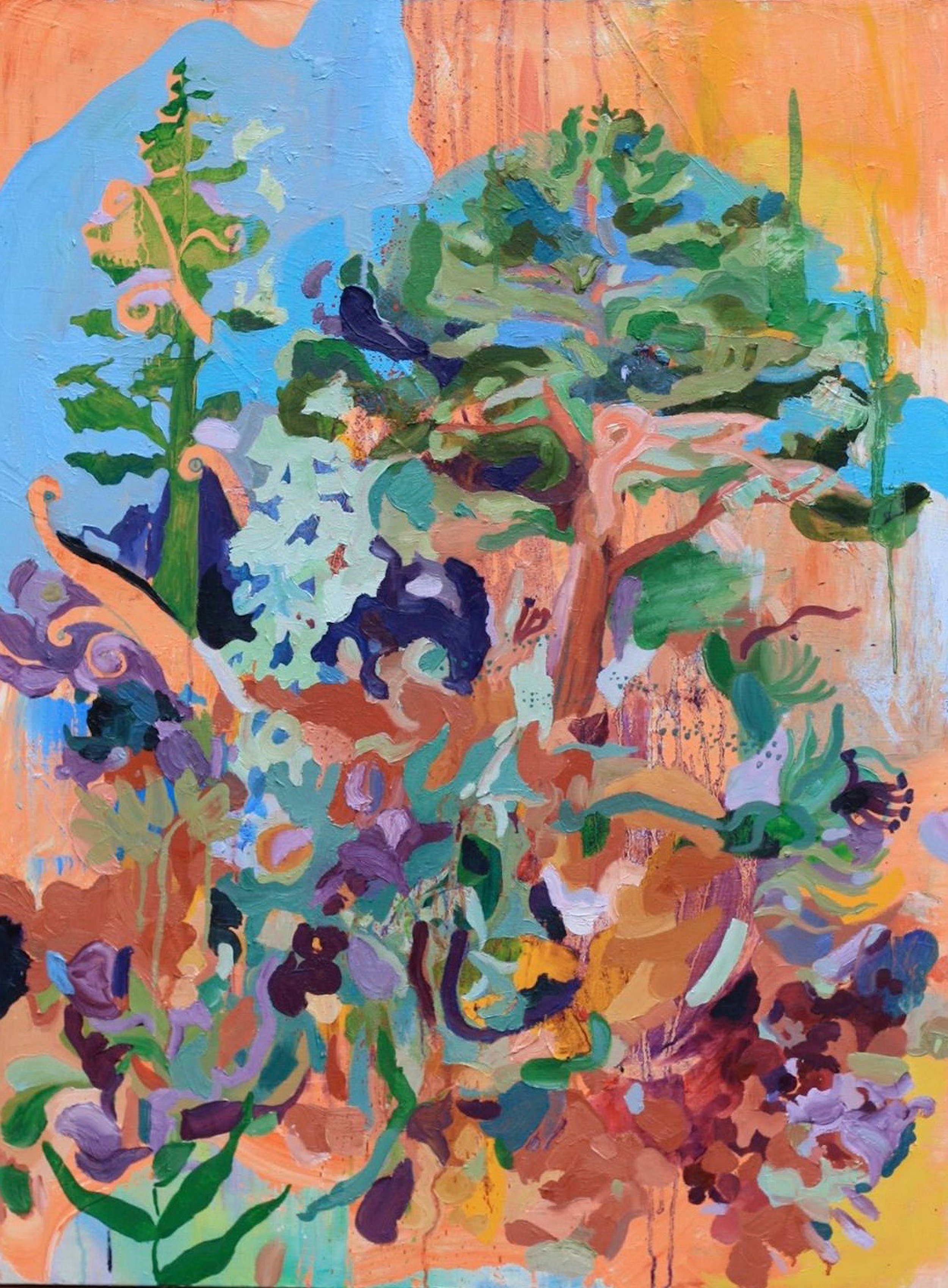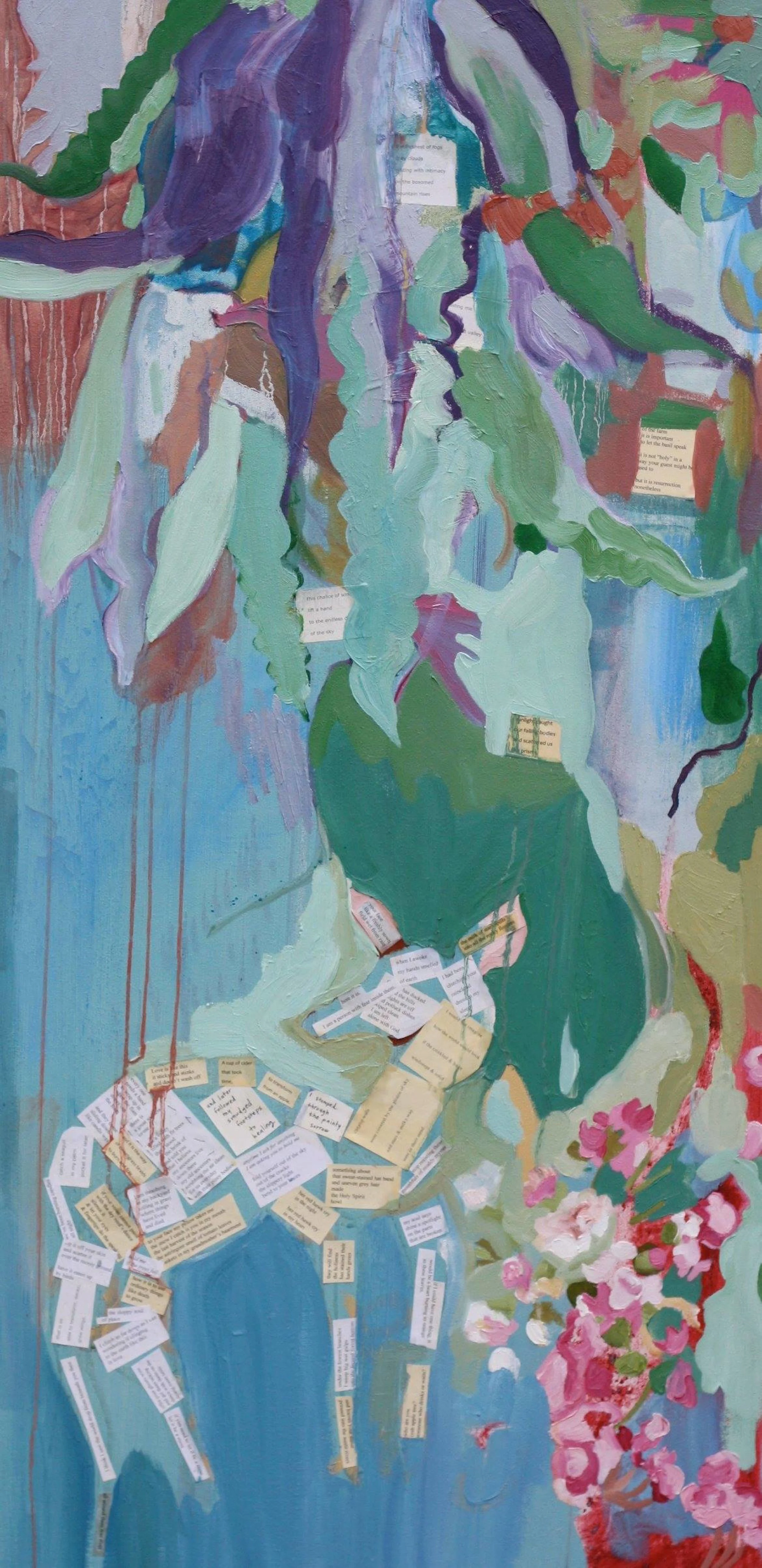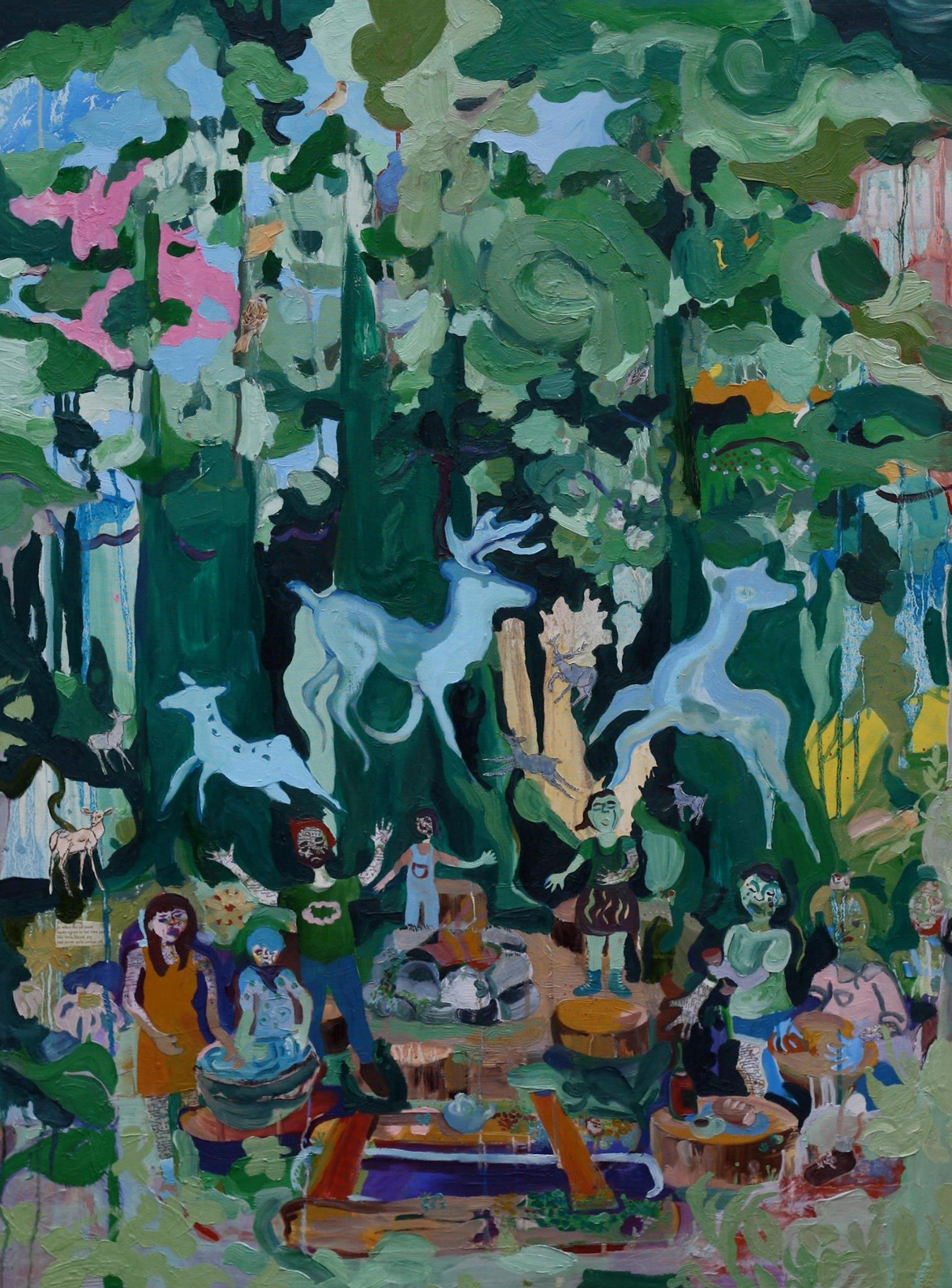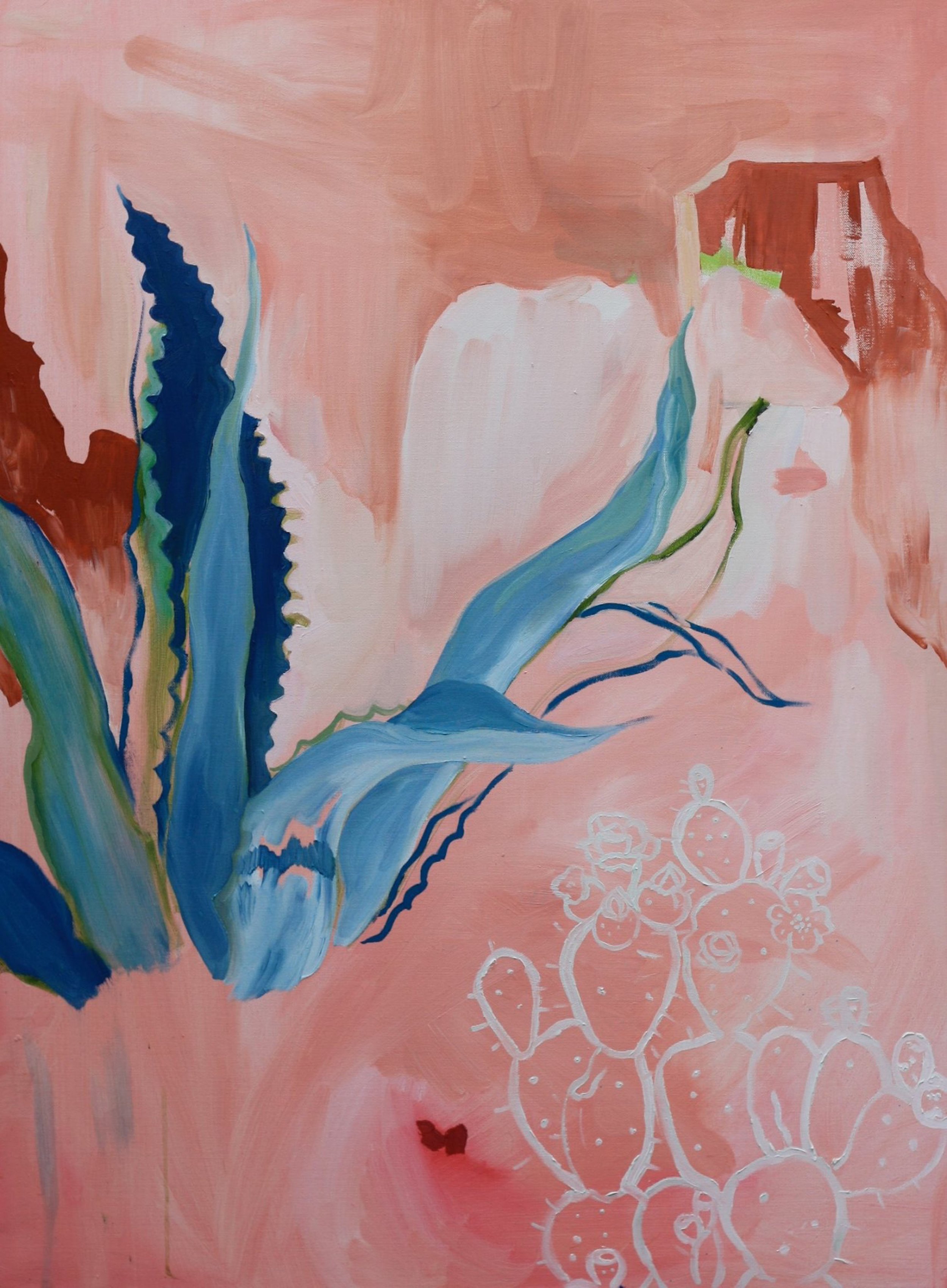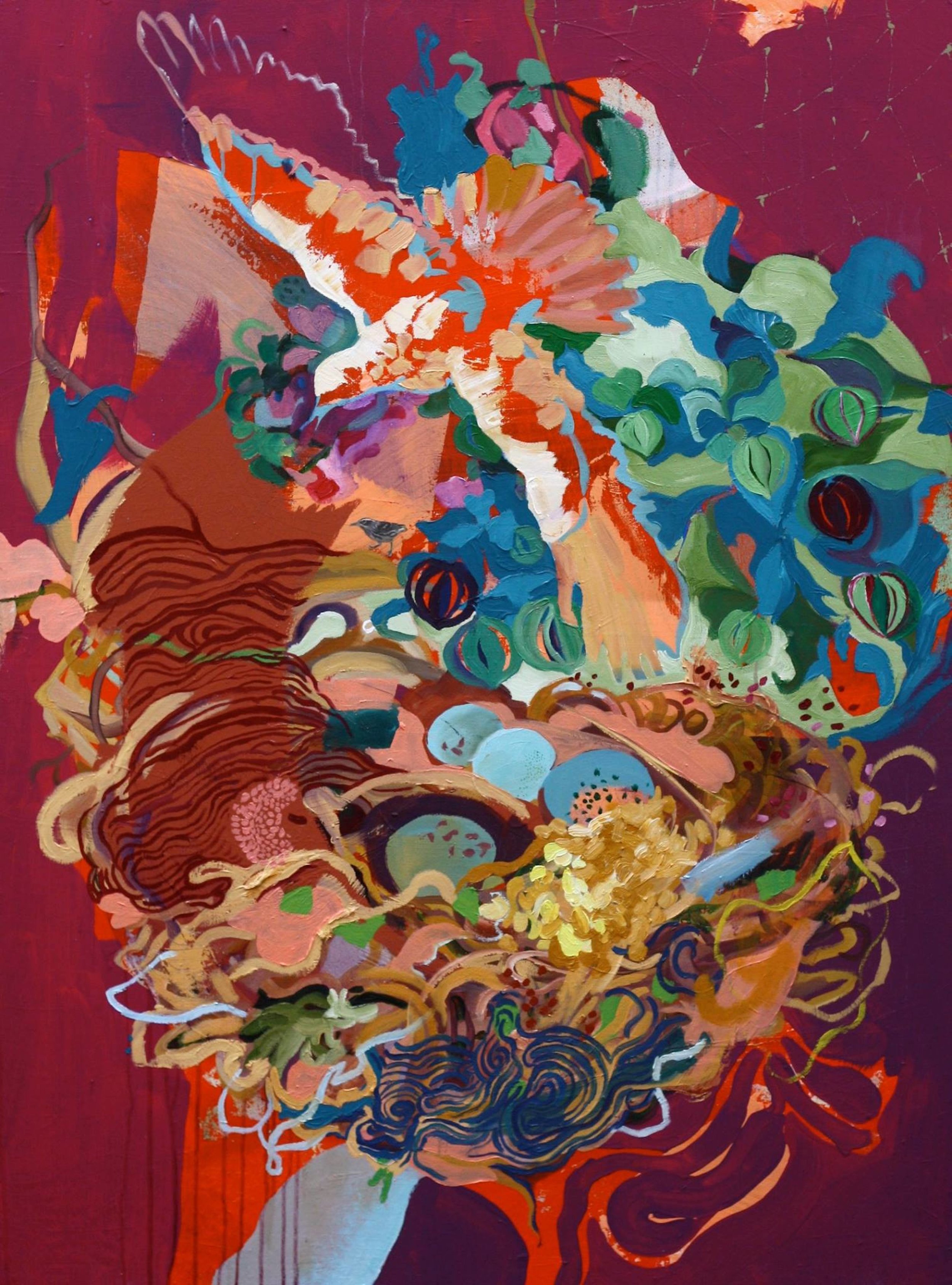
cactus flowers: lamenting in color (2017)
sarah a. holst
cactus flowers: lamenting in color
artist statement
“We played the pipe for you and you did not dance; we sang a dirge and you did not weep.”
In Luke 7:32, Jesus lifts up the subversive power of the traditionally feminine role of communal celebration and wailing. During seasons of revelation when we do the important work of re-learning and telling the truth about violent legacies of systemic racism, the desecration of the earth, and gendered violence against bodies, reclaiming sacred spaces of sorrow and rage is necessary, restorative work. The Church is uniquely positioned to be hallowed ground for transformative, brave rituals. As folks working for transformative justice, we long for community spaces where can bemoan and decry violence and injustices so that we may move collectively toward communal, creative actions of hope. Jesus knew how to lament communally, how to break down gendered walls and say that weeping is for everyone. When we do the revolutionary work of re-membering the stories of an alternative path with our bodies, we recall that unprocessed grief and rage manifests as violence. Communal rituals of lament have traditionally been places for sorrow and grief can go to compost, can be exposed to the elements of the earth and beloved community in order transform into the good soil of imagination for new life.
These liturgical paintings are a map of a ritual of lament. They start with a reminder that the great winged Mother Spirit that moved over the waters at creation is present with us in whatever we bring to the nest of messy, sacramental space. In the first painting, She guards the fragile eggs of new life, which are protected by the bits and pieces of raw, truthful story. Lament is embodied, so the following paintings illuminate how human lament cannot be separated from our watersheds. Our flesh, the animals, soil, and the natural world all know how to heal themselves—so lament must be done with these as our companions.
Lament can be a hugely diverse experience—as diverse as our bodies, our stories, our places, and our communities. Lament is loud and colorful; it is quiet and stark. It can be fast, but usually it is slow. I learned that the paint itself is its own safe space. Painting, like lamenting, is always done in relationship—with myself, with God, with the trees, with my community.

